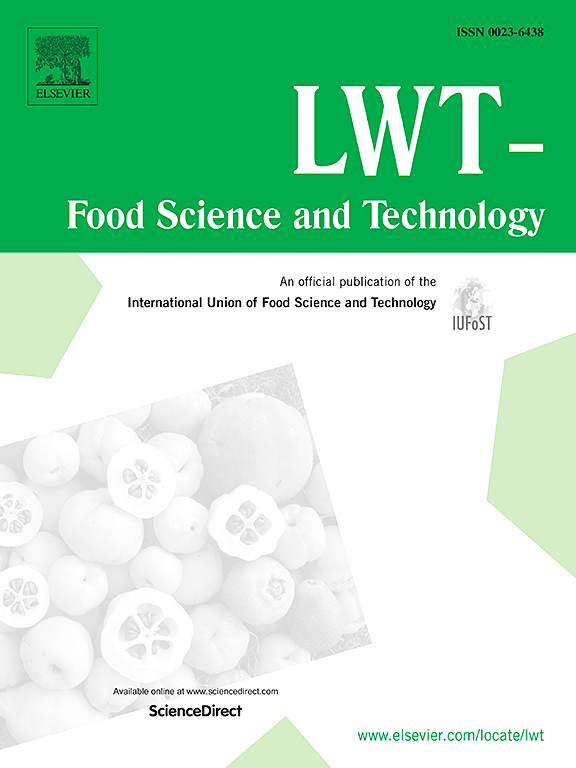Untargeted metabolomics profiling of purple rice phenolics and their antioxidant activities
IF 6
1区 农林科学
Q1 FOOD SCIENCE & TECHNOLOGY
引用次数: 0
Abstract
Phenolics in three purple rice varieties were qualitatively and quantitatively analyzed using untargeted metabolomics, and their antioxidant activities were also investigated. Jixuenuo showed the highest antioxidant activity and phenolic content among the three varieties. Ninety-three phenolics across four categories (flavonoids, phenolic acids, stilbenes, and lignans) were identified, with Jixuenuo showing the highest anthocyanin content. Cyanidin-3-O-glucoside (C3G) accounted for over 90% of total anthocyanin content. The volcano plot analysis identified 53 differential phenolics, 22 of which were classified as major. KEGG pathway analysis revealed significant enrichment in flavonoids biosynthesis pathways. Jixuenuo showed significantly enhanced biosynthesis in the pathways for cyanidin, dihydromyricetin, epicatechin, C3G, myricetin, and rutin. Correlation analysis indicated that these flavonoids were significantly positively correlated with antioxidant activity and total phenolic content. These findings suggest that specific flavonoids in Jixuenuo may serve as markers for evaluating the antioxidant potential of purple rice.
紫稻酚类物质的非靶向代谢组学分析及其抗氧化活性
采用非靶向代谢组学方法对3个紫稻品种的酚类物质进行了定性和定量分析,并对其抗氧化活性进行了研究。其中鸡血诺抗氧化活性和酚类含量最高。共鉴定出黄酮类、酚酸类、二苯乙烯类和木脂素类共93种酚类物质,其中鸡血诺花青素含量最高。花青素-3- o -葡萄糖苷(C3G)占总花青素含量的90%以上。火山图分析鉴定出53种差异酚类物质,其中22种为主要酚类物质。KEGG通路分析显示黄酮类生物合成途径显著富集。鸡血诺显著增强了花青素、二氢杨梅素、表儿茶素、C3G、杨梅素和芦丁的生物合成。相关分析表明,这些总黄酮与抗氧化活性和总酚含量呈显著正相关。上述结果提示,鸡血诺中特定的黄酮类化合物可作为评价紫稻抗氧化能力的指标。
本文章由计算机程序翻译,如有差异,请以英文原文为准。
求助全文
约1分钟内获得全文
求助全文
来源期刊

LWT - Food Science and Technology
工程技术-食品科技
CiteScore
11.80
自引率
6.70%
发文量
1724
审稿时长
65 days
期刊介绍:
LWT - Food Science and Technology is an international journal that publishes innovative papers in the fields of food chemistry, biochemistry, microbiology, technology and nutrition. The work described should be innovative either in the approach or in the methods used. The significance of the results either for the science community or for the food industry must also be specified. Contributions written in English are welcomed in the form of review articles, short reviews, research papers, and research notes. Papers featuring animal trials and cell cultures are outside the scope of the journal and will not be considered for publication.
 求助内容:
求助内容: 应助结果提醒方式:
应助结果提醒方式:


